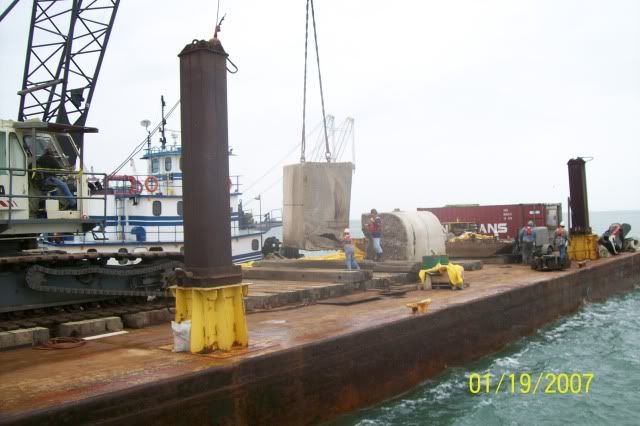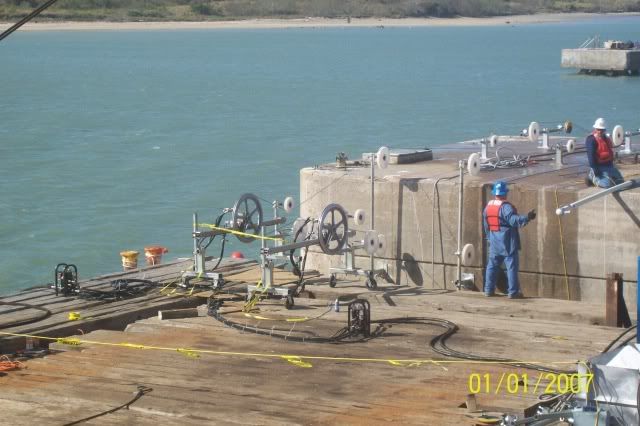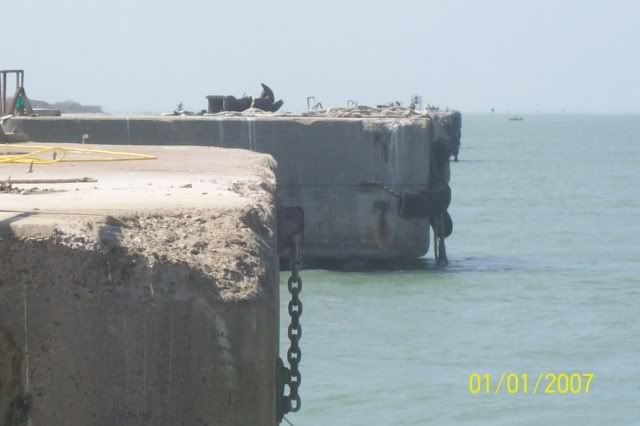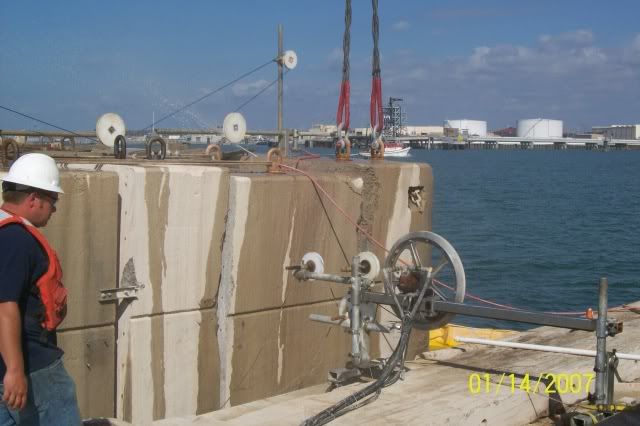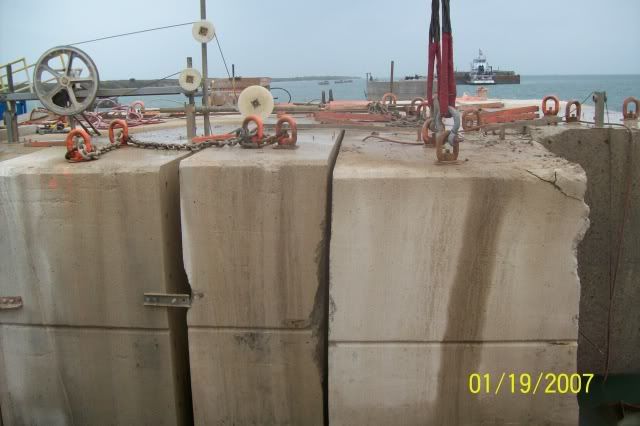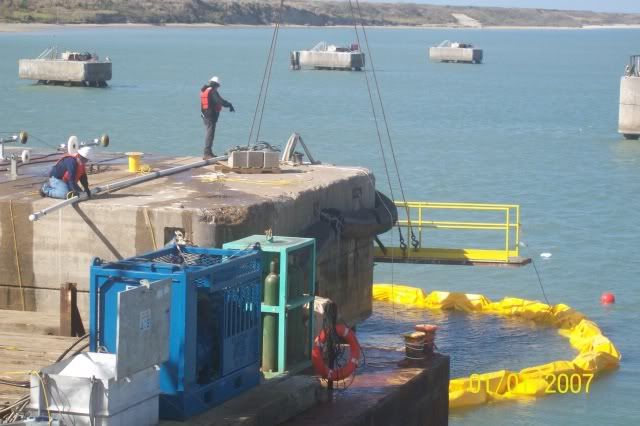Risks of shallow, unanchored artificial reefs
Posted: Jan 21st, '10, 11:32
Ok here is what I was saying about the risks of building artificial reefs from vessels and barges and subway cars and stuff like that. The experts agree that this stuff won’t stay were you put it because it offers a resistant side to the ocean currents and gets tossed all over the place when a storm churns the bottom. If you put it in 60 feet there is nothing to stop it from tumbling into 30 feet, or from turning or stacking so that a part of it could be sticking up when an unsuspecting yacht passes by.
The experts recommend putting sunken debris that is not specially designed for artificial reefs – like they do in Japan-- in deep water, deeper than 90 feet-- and even at that, they recommend that the ship or barge or subway car be anchored because they tend to wander. The Carolinas build artificial reefs, yachtsmen ought to know in 60 feet and some times in 30 feet.
I got into this when the Key Largo part of the Florida Keys Artificial Reef Association got a permit to sink the Spiegle Grove just east of the very healthy reef. I warned them when I was editor of The Boating News to anchor that ship so it could not tumble and crush the reef. They ignored me (even tho I am founder and first president of the FKARA with some knowledge of this stuff.) And sure enough in July 2005 a small storm blew this 510 foot long ship over and toward the reef.
Storm uprights Spiegel Grove!
July 2005 - Underwater turbulence generated by Hurricane Dennis has uprighted the 510-foot artificial reef known as the Spiegel Grove.
The Florida Keys National Marine Sanctuary is working on an emergency closure of the site while it assesses the ship's stability and its general condition. Workers will be removing the mooring buoys temporarily, sanctuary spokeswoman Cheva Heck said.
The shifted position of the 510-foot ship comes as a surprise because the area experienced minimal tropical-storm force winds during the passage of Hurricane Dennis on Saturday.
On Monday, a boat from Key Largo dive shop Ocean Divers visited the former Navy ship, which was scuttled in 130 feet of water May 17, 2002. When divers arrived at the site six miles offshore, they saw that several mooring balls were missing.
Here are a few more:
During Hurricane Andrew all the steel ships off Dade County endured tremendous movement and/or damage. But Andrew came ashore as a small intense storm across lower Biscayne Bay. Meanwhile more than 80 miles north:
“at least one vessel was moved offsite, four were laid over on their sides, and wrecks in water as deep as 180 feet experienced hull damage.
The hulls of the steel freighters Mercedes (250 feet in length in 97 feet of water) and the Noula Express (220 feet in length in 90 feet of water) were both broken in three places. A light gauge metal yacht in 65 feet of water was reduced to rubble.
There was evidence that shipwreck reefs were literally bounced up and down against the bottom (Ken Banks, personal communication).â€
The experts argue that shallow reefs for fishermen and divers often due more harm than good because the only good they do is to create a place for fishermen to lose their terminal tackle. Nobody has studied using a fiberglass boat for an artificial reef because the steel ones don’t last very long, and the idea of a fiberglass boat as a reef is laughable among reef builders.
Hurricane Hugo (1989), like Hurricane Andrew, which had sustained winds exceeding 150 miles per hour, bounced a 450 foot long troop ship, sunk off South Carolina 700 feet laterally across the bottom.â€
Don't take my word for it, All of this and much more is available from this source:
GUIDELINES FOR MARINE ARTIFICIAL REEF MATERIALS
Second Edition
Compiled by the
Artificial Reef Subcommittees of the Atlantic and Gulf States Marine Fisheries Commissions
Ronald R. Lukens and Carrie Selberg
Project Coordinators
January 2004
This project was conducted in cooperation with the U.S. Fish and Wildlife Service and funded by Federal Aid in Sport Fish Restoration Administrative Funds, FWS Grant Agreement Nos. GS96
Amendment 7, A-4-1 and A-5-1. Support was also provided through the Atlantic Coastal Fisheries Cooperative Management Act NA17FG2205 and NA03NMF4740078
The experts recommend putting sunken debris that is not specially designed for artificial reefs – like they do in Japan-- in deep water, deeper than 90 feet-- and even at that, they recommend that the ship or barge or subway car be anchored because they tend to wander. The Carolinas build artificial reefs, yachtsmen ought to know in 60 feet and some times in 30 feet.
I got into this when the Key Largo part of the Florida Keys Artificial Reef Association got a permit to sink the Spiegle Grove just east of the very healthy reef. I warned them when I was editor of The Boating News to anchor that ship so it could not tumble and crush the reef. They ignored me (even tho I am founder and first president of the FKARA with some knowledge of this stuff.) And sure enough in July 2005 a small storm blew this 510 foot long ship over and toward the reef.
Storm uprights Spiegel Grove!
July 2005 - Underwater turbulence generated by Hurricane Dennis has uprighted the 510-foot artificial reef known as the Spiegel Grove.
The Florida Keys National Marine Sanctuary is working on an emergency closure of the site while it assesses the ship's stability and its general condition. Workers will be removing the mooring buoys temporarily, sanctuary spokeswoman Cheva Heck said.
The shifted position of the 510-foot ship comes as a surprise because the area experienced minimal tropical-storm force winds during the passage of Hurricane Dennis on Saturday.
On Monday, a boat from Key Largo dive shop Ocean Divers visited the former Navy ship, which was scuttled in 130 feet of water May 17, 2002. When divers arrived at the site six miles offshore, they saw that several mooring balls were missing.
Here are a few more:
During Hurricane Andrew all the steel ships off Dade County endured tremendous movement and/or damage. But Andrew came ashore as a small intense storm across lower Biscayne Bay. Meanwhile more than 80 miles north:
“at least one vessel was moved offsite, four were laid over on their sides, and wrecks in water as deep as 180 feet experienced hull damage.
The hulls of the steel freighters Mercedes (250 feet in length in 97 feet of water) and the Noula Express (220 feet in length in 90 feet of water) were both broken in three places. A light gauge metal yacht in 65 feet of water was reduced to rubble.
There was evidence that shipwreck reefs were literally bounced up and down against the bottom (Ken Banks, personal communication).â€
The experts argue that shallow reefs for fishermen and divers often due more harm than good because the only good they do is to create a place for fishermen to lose their terminal tackle. Nobody has studied using a fiberglass boat for an artificial reef because the steel ones don’t last very long, and the idea of a fiberglass boat as a reef is laughable among reef builders.
Hurricane Hugo (1989), like Hurricane Andrew, which had sustained winds exceeding 150 miles per hour, bounced a 450 foot long troop ship, sunk off South Carolina 700 feet laterally across the bottom.â€
Don't take my word for it, All of this and much more is available from this source:
GUIDELINES FOR MARINE ARTIFICIAL REEF MATERIALS
Second Edition
Compiled by the
Artificial Reef Subcommittees of the Atlantic and Gulf States Marine Fisheries Commissions
Ronald R. Lukens and Carrie Selberg
Project Coordinators
January 2004
This project was conducted in cooperation with the U.S. Fish and Wildlife Service and funded by Federal Aid in Sport Fish Restoration Administrative Funds, FWS Grant Agreement Nos. GS96
Amendment 7, A-4-1 and A-5-1. Support was also provided through the Atlantic Coastal Fisheries Cooperative Management Act NA17FG2205 and NA03NMF4740078
